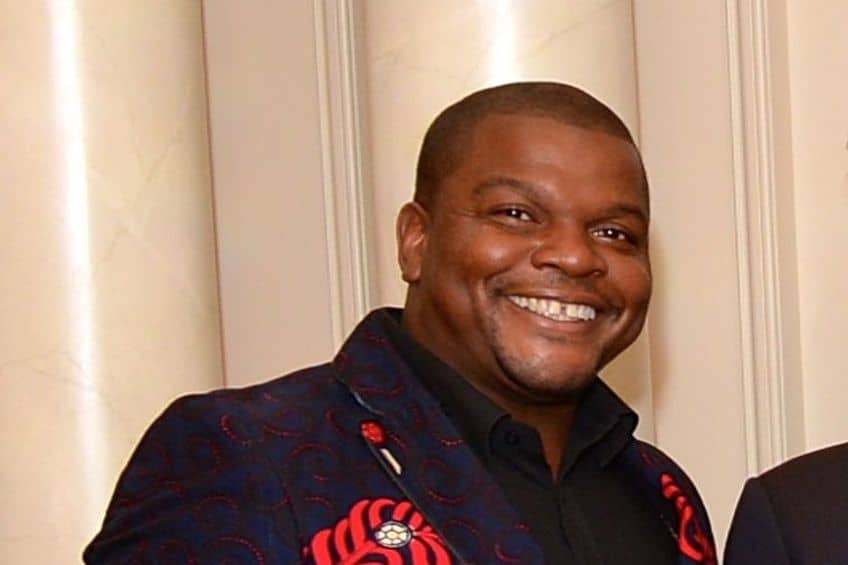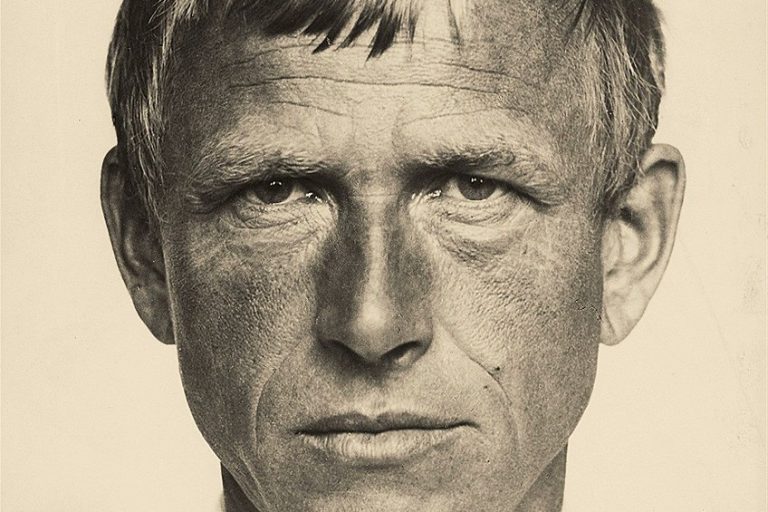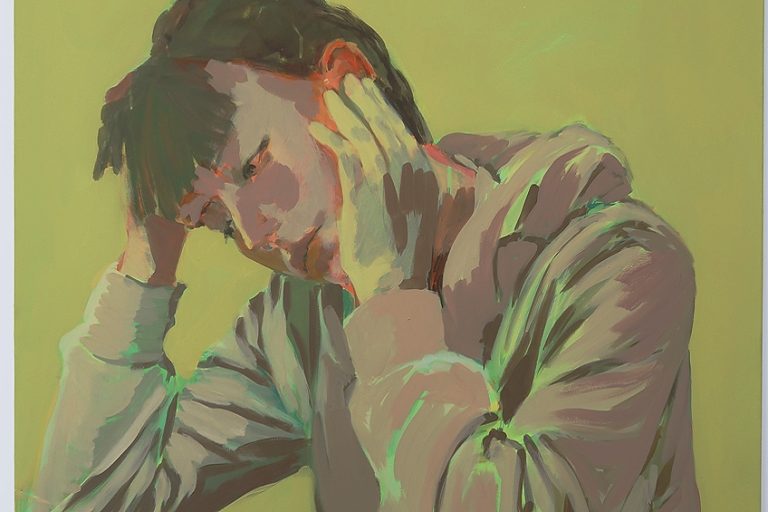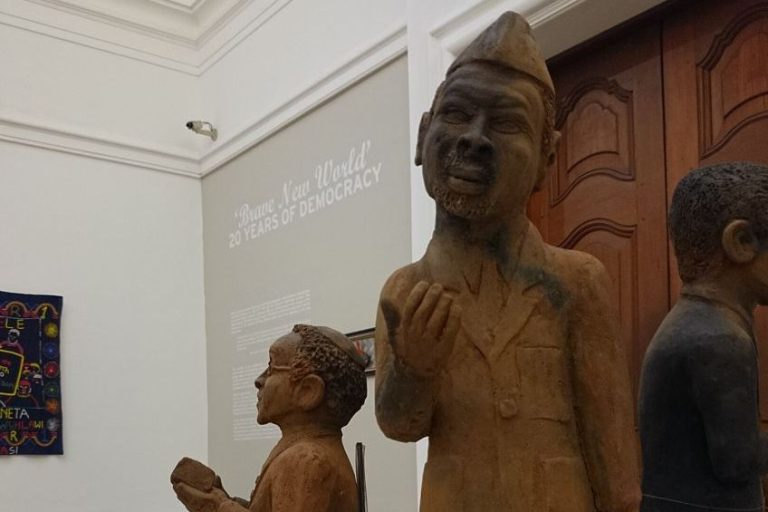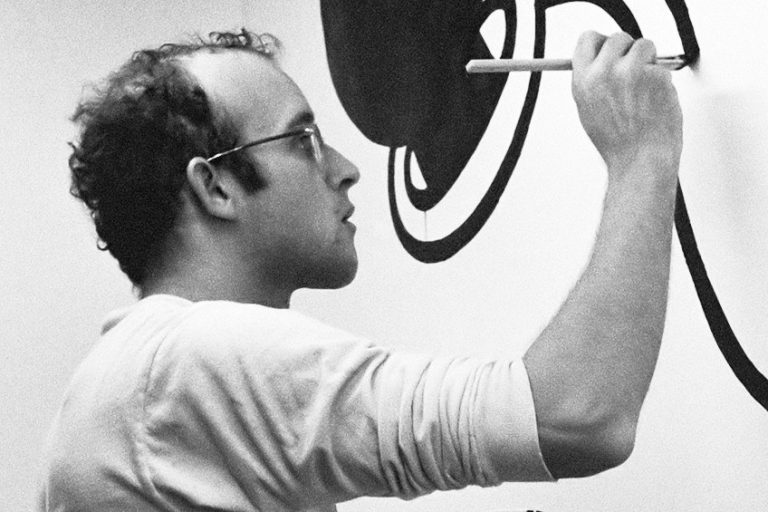Kehinde Wiley – A Detailed Kehinde Wiley Biography
Renowned for his vibrant, photo-based, Rococo-style portraits of young black men, Kehinde Wiley is one of the most celebrated portrait painters of this generation. The men, and occasional women, in his paintings, are proud and self-confident, mimicking the powerful poses from old-master art history paintings. This article takes a closer look at Kehinde Wiley’s biography.
Artist in Context: Kehinde Wiley’s Biography
Kehinde Wiley is a Los Angeles-born and New York-based painter and sculptor. His works are deeply rooted in the black male experience and draw from the history of classical portraiture. Using the visual language of power, fame, and status in history paintings, Wiley subverts the history of Western portraiture as a way to represent young urban black men all over the world.
| Date of Birth | 28 February 1977 |
| Country of Birth | Los Angeles, California, United States |
| Art Movements | Identity art, Naturalism, and Contemporary art |
| Mediums Used | Painting and sculpting |
Childhood and Early Education
Kehinde Wiley was born and raised in South-central Los Angeles. His African-American mother, Freddie Mae Wiley, raised six children as a single mother. Wiley’s Yoruba Nigerian father, Isaiah D. Obot, studied in America but left Wiley’s mother and their children to become an architect in Africa. Wiley’s mother was concerned for her children’s safety, worrying that they might get caught up in the gang culture of the neighborhood. In order to keep them off the streets, she enrolled her children in after-school art classes from age 11.
Wiley excelled in the art classes and his mother identified his talent, something he shared with his brother.
Wiley considered his brother to be the better artist and as a result, committed a lot of time to develop his own artistic skills so that he might challenge his brother. His brother diverged his interest as he grew up, preferring medicine, business, and literature. Kehinde Wiley, on the other hand, fell in love with art. In 1989, when Wiley was 12 years old, he was chosen to be one of 50 American students to travel to Russia. Here, living temporarily at the Centre for U.S./U.S.S.R. in Russia, Wiley could further develop his studies in art and in the Russian language.
Wiley returned to America to complete his education at the Los Angeles County High School of the Arts. Growing up as a young black man in Los Angeles became a strong influence on Kehinde Wiley’s art. He explains that as a boy and young man, he was terrified of the police. Art offered Wiley an escape from the harsh reality of the poverty they lived in. Visiting galleries and museums became a cherished pastime and he became strongly influenced by the Romantic paintings of John Constable and the portraiture of Thomas Gainsborough. Wiley explains that on weekends, his family would visit the Huntington Library and Gardens, and the Los Angeles County Museum of Art.
He continues to explain that here he was “enthralled by these strange portraits of people with powdered wigs and pearls and lapdogs”.
Mature Education and Early Career
Wiley continued to study art at the San Francisco Art Institute and graduated with a BFA in 1999. He then got awarded a scholarship that allowed him to continue his education at the Yale School of Art. In 2001, Wiley completed his MFA. Wiley explains that the most important lesson he learned during his studies is to be authentic in his work, to make the art he wanted to make and not what his professors liked.
Wiley had always been interested in portraiture. However, a defining moment in his career happened in 2001 when he found a crumpled sheet of paper on the streets of Harlem.
The paper contained a mugshot. Considering the mugshot as a form of portraiture, Wiley began to question how we present ourselves in the world. The person in the mugshot, Wiley thought, has no control over how he is portrayed. Wiley temporarily experimented with painting mugshots on canvas. After he graduated, Wiley was offered a fully paid artist residency at the Studio Museum in Harlem. Here, Wiley explains that he would spend almost all of his time painting in the museum, being inspired by the works that were on display. During this time, Wiley was approached by Jefferey Deitch. Deitch offered Wiley his first solo show in New York City and proceeded to represent him for the following 10 years.
Mature Career
In 1997, Wiley set out for West Africa to reconnect with his estranged father. The first meeting did not turn out well, but Wiley continued to return and over time managed to develop a relationship with his father. His father passed away in 2019 and Wiley explained that he felt relieved that he had put in the work to build a relationship. His travels to Africa were, however, about more than a need for a relationship with his father. His goal was also to gain a better understanding of the place and history that shaped him as a person.
During his mature career, Wiley’s models for his paintings expanded from young men on the streets of inner-city Los Angeles and New York to include cities like Rio de Janeiro, Dakar, Senegal, and Mumbai.
Wiley explains that mostly he chooses his models by looking for young men that have a spirit of “self-possession”. Being a gay man, he explains that sometimes his models are men to whom he also feels sexually attracted. Most of the time, the models are men, and sometimes women, that resonate with him, to which he can identify some past self in.
Following a brief exchange of glances, Wiley approaches the potential model, explains his work, and shows them examples of prior paintings. While most people decline to be models, those that are interested are invited to Wiley’s studio for a photoshoot. During the photoshoot, the models are staged in poses typically used in old-master Renaissance paintings. As a twist on these paintings, the models will be dressed in contemporary urban fashion. As Wiley argues, the purpose of this is to position the young man in a current setting while also portraying him as historically eminent and powerful.
In 2005, Wiley was commissioned by the VH1 network to paint portraits of Hip Hop stars in his typical classical style, portraying them as significant historical figures. Wiley decided to depict Ice T as Napoleon and Grandmaster Flash and the Furious Five as civic guards in a 17th-century Dutch regime. Wiley was named Artist of the Year in 2011 by both Canteen Magazine and the New York City Art Teachers Association/United Federation of Teachers.
In the same year, two of his paintings were featured on 500 taxis in New York City in association with the Art Production Fund.
In 2017, Wiley was commissioned by the Smithsonian National Portrait Gallery to paint the portrait of the then-president of the United States, Barack Obama. The painting was unveiled in 2018. Wiley also began experimenting with sculpture and in 2019 unveiled a statue in Times Square, New York City. The sculpture, titled Rumors of War, was a typical bronze equestrian statue, but with the twist that the rider was a black man with dreadlocks, ripped jeans, and Nike sneakers. In addition to his studio in Brooklyn, Wiley also has studios in China and Senegal. Here he has studio assistants that paint the ornately patterned backgrounds before Wiley works on the portraits himself. Wiley also recently began working in film, exploring the historical European traditions of landscape and seascape painting.
Important Kehinde Wiley Art
Kehinde Wiley’s paintings are instantly recognizable. In most cases, we see a strong, attractive, solitary figure (generally a young black man), within an ornately decorated background, assuming a regal pose reminiscent of old Renaissance paintings. Most of the time, the figure is dressed in contemporary attire, from hip-hop streetwear to branded activewear. The figure is contemporary, yet, they are far removed from their typical portrayal situated within the grit that Wiley recalls from his childhood. Below we discuss a small selection of Kehinde Wiley paintings, along with select Kehinde Wiley prints.

Napoleon Leading the Army Over the Alps (2005)
| Artwork Title | Napoleon Leading the Army Over the Alps |
| Date | 2005 |
| Medium | Oil on canvas |
| Size (cm) | 274.3 x 274.3 |
| Collection | Brooklyn Museum, New York City, United States |
This work is a twist on Jacques-Louis David’s famous painting, Bonaparte Crossing the Grand Saint-Bernard Pass, 20 May 1800 (1800). In this painting, Wiley reimagines the famous painting by replacing the figure of Napoleon with that of a young black man with an outstretched tattooed arm. The man wears a white bandanna, red sweatbands on his wrists, an army outfit, and a seemingly windswept yellow-gold cloak majestically frames his shoulders.
The man sits confidently on a white horse that looks almost exactly like the horse in David’s painting. The horse is standing on a rocky landscape, again similar to the landscape in David’s original painting. The original painting shows names etched into the rock, including Bonaparte, Hannibal, and Karolus Magnus. These are all names of military leaders who have in the past led their armies across the Alps. In Wiley’s painting, we see the additional name of Williams, which is also the name of the man who modeled for the painting.
Another similarity between Jacques-Louis David and Kehinde Wiley’s paintings is the placement of the artist’s signature. Wiley, like David, signed his name on the breastplate of the horse.
A big difference between the two paintings exists in the background of the works. While the upper three-quarters space of David’s painting is a natural landscape, Wiley’s background is a flat red and gold patterned surface reminiscent of Baroque decorations. Throughout the background, small white sperm swims over the red and gold patterns. Wiley explains that the inclusion of the sperm is a reference to masculinity. This, Wiley argues, both reference the masculinity of the black rider, whilst poking fun at the way masculinity is depicted in the history of portrait painting as heterosexual white dominance, living in opulence.
The irony of these depictions is that they are completely false and only used as propaganda. We see this, especially in David’s portrayal of Napoleon, who never actually led his army on a white horse, but who rather followed behind on a mule.
Further falsities arise in the original historical portrait in that the size of Napoleon on the horse is greatly exaggerated. Wiley explained that he originally planned to use real Hollywood horses for his models in the painting, but realized that humans appear much smaller on horses in real life. To stay true to David’s depiction of Napoleon, Wiley used Photoshop to enlarge his model to get the same human-to-horse ratio as in the original painting.
Wiley calls this effect “hyper-heroic”. By replicating this exaggerated ratio, coupled with the sheer physical size of the painting, Wiley is commenting on the propaganda of white masculinity seen throughout art history. In works such as these, Wiley is questioning which figures really deserve to be decorating the walls of great museums.
Portrait of Wangechi Mutu, Mamiwata (2017)
| Artwork Title | Portrait of Wangechi Mutu, Mamiwata |
| Date | 2017 |
| Medium | Oil on canvas |
| Size (cm) | 239.9 x 305.1 |
| Collection | Unknown |
This painting is one of the more select Kehinde Wiley paintings that feature a black woman, as opposed to a young black man. Monumental in size, the work features the contemporary artist, Wangechi Mutu. The painting is part of a series of works, named Trickster, which features a select group of black artists that Wiley admires, including Wanhechi Mutu, Yinka Shonibare, Derrick Adams, Nick Cave, Sanford Biggers, Rashid Johnson, Kerry James Marshall, Hank Willis Thomas, Glenn Ligon, Mickalene Thomas, Lynette Yiadom-Boakye, and Carrie Mae Weems.
In these paintings, Wiley draws from the trope of the “trickster” found in various mythological tales across different cultures. The artists Wiley painted in this series are compared to mythological trickers in the way that they disrupt the status quo and subvert social norms in their work. In these works, Wiley is commenting on how these influential artists have pushed the boundaries and redefined contemporary Western art.
Heroes of all kinds are typically depicted in Western portraiture, and in these works, Wiley is depicting these artists as his heroes. These are artists he has felt supported and inspired by. Wangechi Mutu, Wiley explains, is an artist that was at Yale at the same time as he has. While she was making work in the sculpture department, he was mostly in the painting department. Mutu became a familiar face and part of his artist community, who would offer constructive criticism and support. In this painting, Wiley depicted Wangechi Mutu as Mami Wata. Mami Wata is the water- and sea spirit, a deity recognized in most of West Africa.
President Barack Obama (2018)
| Artwork Title | President Barack Obama |
| Date | 2018 |
| Medium | Oil on canvas |
| Size (cm) | 213.7 x 147 |
| Collection | National Portrait Gallery, Washington D.C., United States |
Kehinde Wiley’s painting of Barack Obama is both simple and incredibly radical, especially when comparing it to older presidential portraits. The portrait was commissioned in 2017 by the Smithsonian’s National Portrait Gallery in Washington D.C. and was unveiled on the 12th of February, 2018. In the portrait, Wiley depicts Obama with glowing skin, looking directly at the viewer. Obama sits calmly on a wooden chair that seems to float in a background engulfed with intricate patterns of leaves and flowers. The flowers include jasmine, chrysanthemums, jasmine, and African blue lilies.
Wiley explains that the flowers are specifically chosen to give cultural context to Obama’s personal roots as these flowers are indigenous to Indonesia, Kenya, Hawaii, and Chicago.
Further details give insight into Obama’s personality. The casual posture of the chair makes him more relatable. His slightly forward-leaning posture and the open collar with the absence of a tie signify that Obama is a man of the people. On his left hand, his wedding ring is visible. Kehinde’s depiction of Obama is strikingly humble, compared to his works like Napoleon Leading the Army Over the Alps (2005).
During the process of preparing for the work, Wiley and Obama could connect over their shared experiences. Both were African-American men raised by loving African-American mothers. Both had absent African fathers. Obama explained that he asked Wiley to make his hair less grey and his ears slightly smaller. Both these requests were denied by Wiley, who argued that it would go against his artistic integrity.
Dimietrus Study (2021)
| Artwork Title | Dimietrus Study |
| Date | 2021 |
| Medium | Archival ink on paper signed edition of 30 |
| Size (cm) | 64.78 x 47.94 |
| Collection | Signed limited edition of 30, made available via the Kehinde Wiley Studio website |
This work is one of Kehinde Wiley’s prints. Though printmaking is not typically part of Wiley’s oeuvre, he has on select occasions collaborated with Roberts Projects and Black Rock Senegal to produce limited editions of 30 prints to be sold for charity. These prints are all based on past paintings and Dimietrus Study (2021) is the third limited edition print that Wiley produced to support the artist program he started in Senegal, called Black Rock.
The residency program allows artists from all over the world, specializing in various disciplines, to come together to live and work within the space in Senegal for up to three months.
Dimietrus Study (2021) is a portrait of a young black man from New York that Wiley originally painted in 2008. The young man is painted in a composition of pink and blue flowers, contrasting what is traditionally viewed as feminine and masculine. Wiley explains that what continues through all of the prints that he makes available to support Black Rock is the contrast between masculine and feminine, history and the present.
Reading Recommendations
Kehinde Wiley’s art translates beautifully to the pages of these impressive publications. These recommended readings are not only beautiful to look at, but also insightful and thought-provoking to read. We suggest the following three publications to add to your artist book collection.
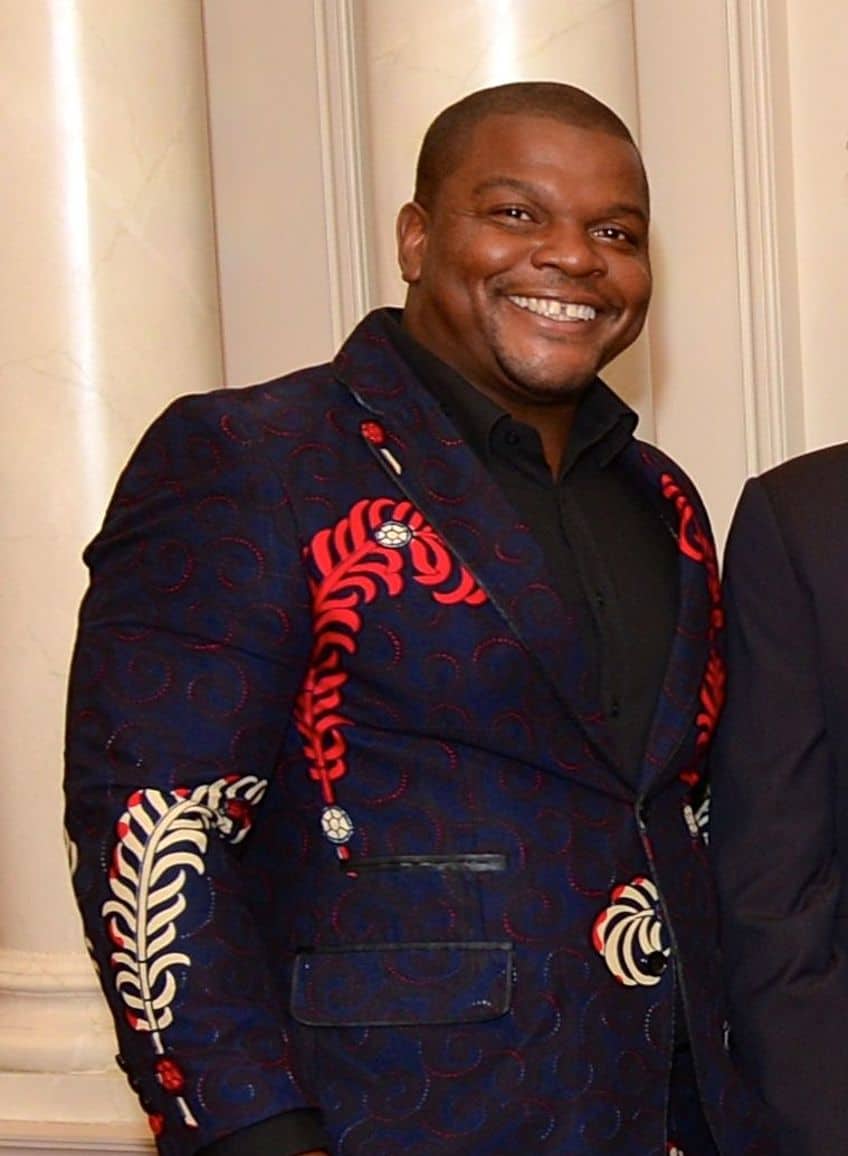
Black Light (2009) by Kehinde Wiley, Brian Keith Jackson, and Krista A. Thompson
Black Light (2009) is Wiley’s first monograph. A must-have for anyone interested in Kehinde Wiley’s paintings, this book is generous in its illustrations and size. The large format of the book really allows the work and the subjects in his vibrant portraits to shine.
- Kehinde Wiley traces his own artistic career in this book
- Discover how his work interrupts tropes of portrait painting
- Explore Wiley's portraits through his own words
Kehinde Wiley: A New Republic (2015) by Connie H. Choi, edited by Eugenie Tsai
This richly illustrated book offers a closer look at Kehinde Wiley’s paintings and sculptures. The book is co-published with the Brooklyn Museum of Art as part of a major traveling retrospective of Wiley’s work from as early as 2001. This book offers a broad scope of the artist’s work over the past decade, including paintings inspired by Harlem’s streets, portraits from around the world, and newer sculptural works.
The publication also includes insightful essays on Wiley’s career, his influences, and continued development.
- A collection of Kehinde Wiley reproductions
- Tracks the artist's series of paintings and sculptural work
- Explore Wiley's career from 2001 to the present day
The Obama Portraits (2020) by Taína Caragol, Dorothy Moss, Richard Powell, and Kim Sajet
This book, published in association with the Smithsonian’s National Portrait Gallery, focuses on the portraits of Barack and Michelle Obama which was unveiled in 2018. Kehinde Wiley’s portrait of Barack Obama and Amy Sherald’s portrait of Michelle Obama marks the first time that black artists have been commissioned by the Smithsonian to create official presidential portraits. The book considers the paintings in-depth and discusses the responses they evoked from the public. The publication boasts rich illustrations of both artists’ works, together with photos of the Obamas sitting for the artists and a transcript of the unveiling ceremony.
- A collection of exclusive pictures of the Obamas
- Explore the history of portraiture within American culture
- Includes remarks from the Obamas and the artists
By subverting the history of portrait painting, Kehinde Wiley’s art blurs the boundaries between historical and contemporary modes of representation. His monumental depictions of young black men as subjects in historical heroic portraiture shine a critical light on the narratives of masculinity represented in Western art history. By shifting the focus to the young black man, Kehinde Wiley’s paintings have also affected the demographics of museum visitors. Wiley explains that he wants to give black communities a sense of belonging within art institutions.
Frequently Asked Questions
Which of Kehinde Wiley’s Paintings Are the Most Famous?
Of all Kehinde Wiley’s paintings, his work Napoleon Leading the Army Over the Alps (2005) is arguably the most famous. However, since he was commissioned to paint the presidential portrait, it is possible that the painting, President Barack Obama (2018), is currently his most famous work.
What Is Kehinde Wiley Inspired By?
Kehinde Wiley’s work is greatly influenced by his childhood experiences. Growing up in a poor neighborhood where he was a young, gay, black man afraid of gang violence and unjust police, Wiley wanted to create a space through his art where young men are portrayed differently. He wanted to situate young black men in a safe and opulent space, where he could portray them as confident and regal. To create these depictions, Wiley draws inspiration from classical European portraiture, especially those depicting leaders, the aristocracy, and royals.
Chrisél Attewell (b. 1994) is a multidisciplinary artist from South Africa. Her work is research-driven and experimental. Inspired by current socio-ecological concerns, Attewell’s work explores the nuances in people’s connection to the Earth, to other species, and to each other. She works with various mediums, including installation, sculpture, photography, and painting, and prefers natural materials, such as hemp canvas, oil paint, glass, clay, and stone.
She received her BAFA (Fine Arts, Cum Laude) from the University of Pretoria in 2016 and is currently pursuing her MA in Visual Arts at the University of Johannesburg. Her work has been represented locally and internationally in numerous exhibitions, residencies, and art fairs. Attewell was selected as a Sasol New Signatures finalist (2016, 2017) and a Top 100 finalist for the ABSA L’Atelier (2018). Attewell was selected as a 2018 recipient of the Young Female Residency Award, founded by Benon Lutaaya.
Her work was showcased at the 2019 and 2022 Contemporary Istanbul with Berman Contemporary and her latest solo exhibition, titled Sociogenesis: Resilience under Fire, curated by Els van Mourik, was exhibited in 2020 at Berman Contemporary in Johannesburg. Attewell also exhibited at the main section of the 2022 Investec Cape Town Art Fair.
Learn more about Chrisél Attwell and the Art in Context Team.
Cite this Article
Chrisél, Attewell, “Kehinde Wiley – A Detailed Kehinde Wiley Biography.” Art in Context. April 18, 2023. URL: https://artincontext.org/kehinde-wiley/
Attewell, C. (2023, 18 April). Kehinde Wiley – A Detailed Kehinde Wiley Biography. Art in Context. https://artincontext.org/kehinde-wiley/
Attewell, Chrisél. “Kehinde Wiley – A Detailed Kehinde Wiley Biography.” Art in Context, April 18, 2023. https://artincontext.org/kehinde-wiley/.


